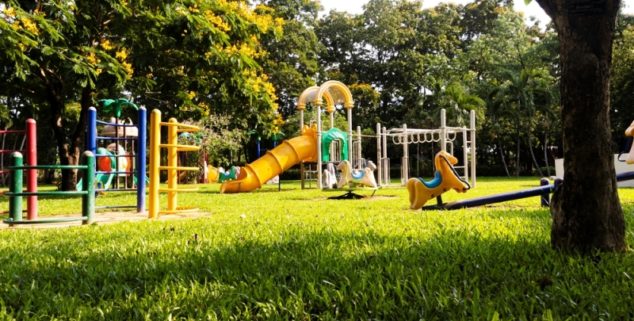Opinion
‘Greening’ schoolyards must be a state investment priority
 A children's playground cloaked in greenery. (Photo: JameSit, via Shutterstock)
A children's playground cloaked in greenery. (Photo: JameSit, via Shutterstock)From San Diego to Sacramento, the threat of rising temperatures to our youth continues to worsen.
And as six million California public school students return to class this month, they’ll be walking onto schoolyards covered with asphalt – prison-like, unhealthy environments that are detrimental to a kid’s physical, mental and educational health.
Fortunately, state policymakers this month have an historic opportunity to build a lasting, bipartisan legacy to address this systemic injustice by ripping out asphalt, planting trees and “greening” K-12 schools so our youth can grow, learn and play in healthier environments.
California’s commitment to solving climate change could not be played on a more impressionable stage than in the classrooms and on the playgrounds.
As our Legislature works with Gov. Newsom on how to wisely invest our $70 billion budget surplus, we urge them to allocate at least $250 million to support a rapidly growing movement of students, teachers and parents seeking greener schools.
In last July’s budget, an initial funding floor of $50 million was set for greening schools. This amount, however, would only retrofit a fraction of California’s more than 10,500 schoolyards. That’s why we’re calling for an additional $200 million to be appropriated in the final climate-resiliency budget to better support the much-needed transformation of our schools.
Such a commitment would echo Gov. Newsom’s recent call to boost California’s climate blueprint for the world’s first large-economy plan for carbon neutrality.
“Prioritizing community health…and economic growth can work hand in hand,” he said July 22. “We now need to take even bolder action…”
California’s commitment to solving climate change could not be played on a more impressionable stage than in the classrooms and on the playgrounds where future generations learn and play during their formative years.
Greener schoolyards supports academic excellence, complements environmental education standards and improves student health and wellbeing
Yet, it has been 10 years since voters passed Proposition 39, which invested $1.7 billion on school energy-efficiency programs. With temperature trends rising worldwide, now is the time to address the need for more trees and less asphalt.
Here’s why:
–Shade from trees can lower surface temperatures by up to 45 degrees and cool the air around them, lowering air temperatures by up to 9 degrees.
–Greening schoolyards produces water-savings and flood-reduction benefits.
–Greener schoolyards supports academic excellence, complements environmental education standards and improves student health and wellbeing.
For an example on how greening schools can work, see this recent story on Vaughn Early Education Center in Pacoima.
Let’s confront this threat to future generations of students. Let’s improve their quality of education, and their health.
Let’s start by the simple act of planting a tree.
—
Editor’s Note: State Sen. Bob Hertzberg represents nearly one million San Fernando Valley residents of Senate District 18. Cindy Montañez, a former member of the Assembly, is CEO of TreePeople, a Southern California-based environmental advocacy group.
Want to see more stories like this? Sign up for The Roundup, the free daily newsletter about California politics from the editors of Capitol Weekly. Stay up to date on the news you need to know.
Sign up below, then look for a confirmation email in your inbox.

Leave a Reply